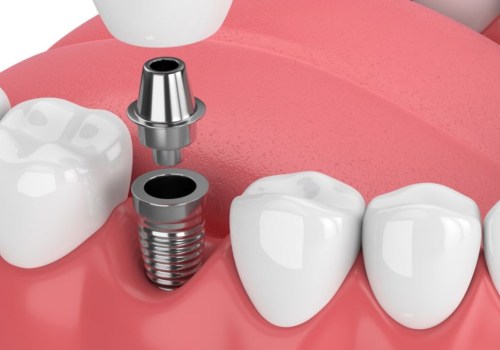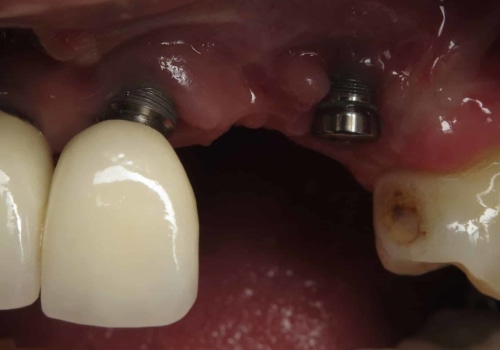Because titanium implants.
Dental implants
are surgically placed in the jawbone, where they serve as roots for missing teeth. Because the titanium in the implants fuses with the jawbone, the implants won't slip, make noise, or cause bone damage like fixed bridges or dentures would. And materials can't deteriorate like your own teeth that support normal bridge work.Placing a dental implant usually involves several steps. First, your dentist will surgically place a titanium post on your jaw. As it heals, the implant will osseointegrate or, in other words, fuse with the natural jaw, creating a solid base for replacement teeth. The titanium roots of dental implants are embedded in the jaws.
Over time, titanium fuses with the jawbone to provide a reliable base for replacement teeth, whether it's a dental crown, bridges, hybrid dentures, or overdentures. Dental implants are artificial tooth roots that are inserted into the jawbone. Dental implants are used as a base to hold a prosthetic tooth in place. In this way, they work in a similar way to natural dental roots.
The result is artificial teeth that look, feel and work just like natural teeth. Tooth implantation will be your next appointment. It is performed with local anesthesia that induces the absence of sensitivity in a specific area of the jaws. All procedures are completely painless.
A bone groove is created and the implant holder is placed in the prepared site. The implant will be closed with a healing screw or healing cap. A suture is placed to seal the tissues tightly around the dental implant. Dental implants work by replacing both the root and crown of a missing tooth.
This key feature sets them apart from options such as dental bridges and traditional dentures, which only replace the crowns of missing teeth. It is also responsible for the excellent results obtained with implants, as well as for their natural look and feel. As it sounds, this is the implantation of a single false tooth, also known as a crown. To be implanted, you must first have a small titanium device implanted in your gum.
This will act as an artificial “root” to secure the tooth. The length of the procedure and the recovery time will largely depend on the type of implant you receive. Lapses in routine dental care, or prolonged periods of irregular dental care, can facilitate the growth and spread of gum disease and may even compromise your new teeth. The dental implant planning process can involve a variety of specialists, such as a doctor who specializes in conditions of the mouth, jaw and face (oral and maxillofacial surgeon), a dentist who specializes in treating the structures that support teeth, such as gums and bones (periodontist) , a dentist who designs and adjusts artificial teeth (prosthodontist) or occasionally an ear, nose and throat specialist (otorhinolaryngologist).
Still, it requires a bit of planning ahead of time so that implant surgery can be done when the opportunity arises. This type of implant takes existing dentures and converts them into implants by joining the abutments at the bottom. A dental implant looks like a cylinder or screw and serves as an artificial replacement for the root of a missing tooth. How dental implant surgery is performed depends on the type of implant and the condition of the jaw.
He is known for providing exceptional care and can use implants in a wide variety of situations to restore his patients' smiles. In addition to that, dental implants help prevent the bone underneath the gum mass from shrinking because they stimulate bone growth compared to other remedies, such as dentures and crowns. The real dental implant is a small, sturdy titanium or ceramic pole that acts as the root structure of a natural tooth. Dental implants are a safe and reliable way to restore your smile without the need for a traditional denture or bridge.
Sometimes, fixing the jaw also becomes an essential part of this treatment, as it ensures the stability and durability of the implants if installed in places where there is bone loss. Implants require a large amount of healthy jawbone to support and, in some cases, this area has less “bone height” than is present around the back teeth. You will undergo regular dental hygiene, such as brushing your teeth, flossing and visiting your dentist for checkups and cleanings. .
.







